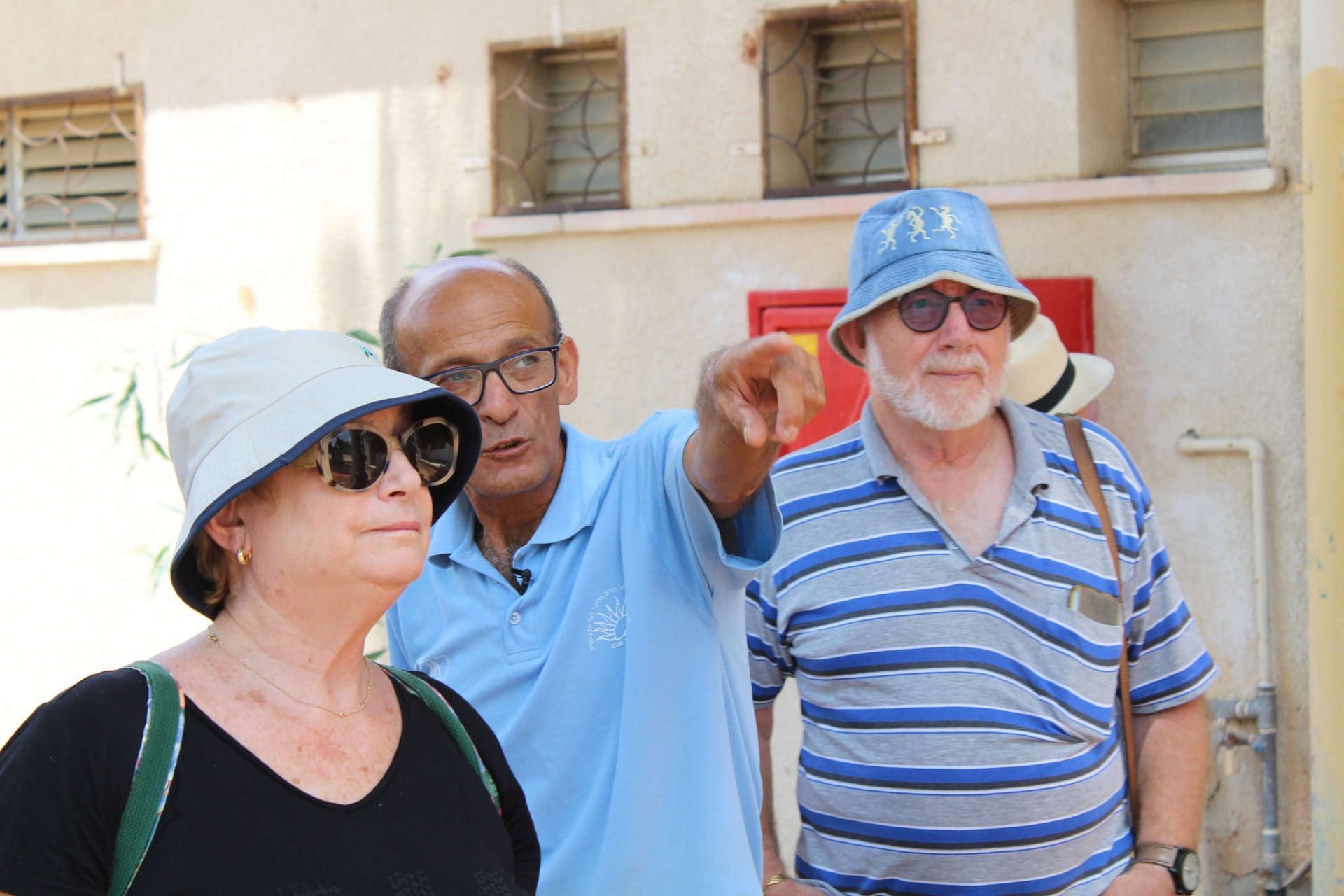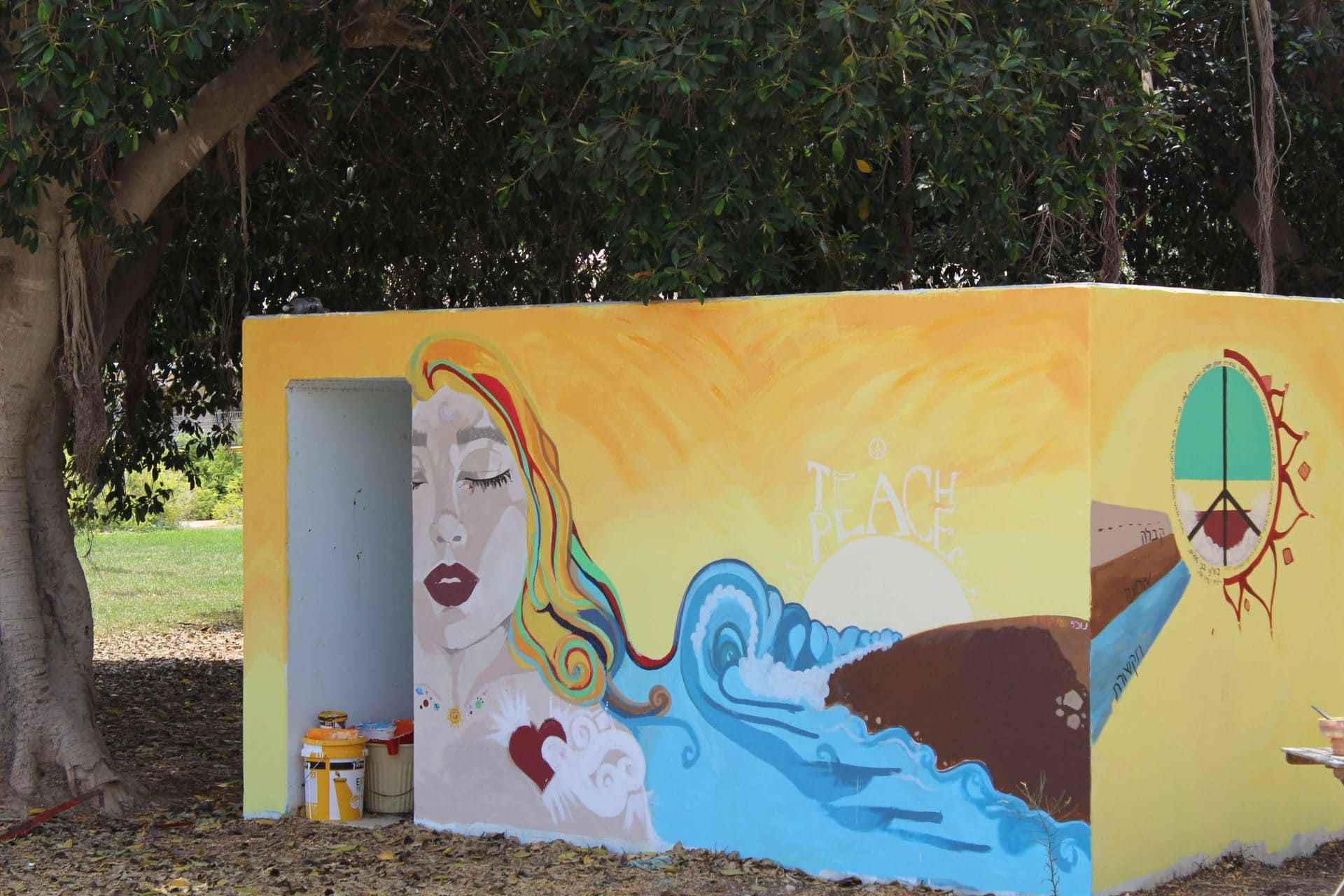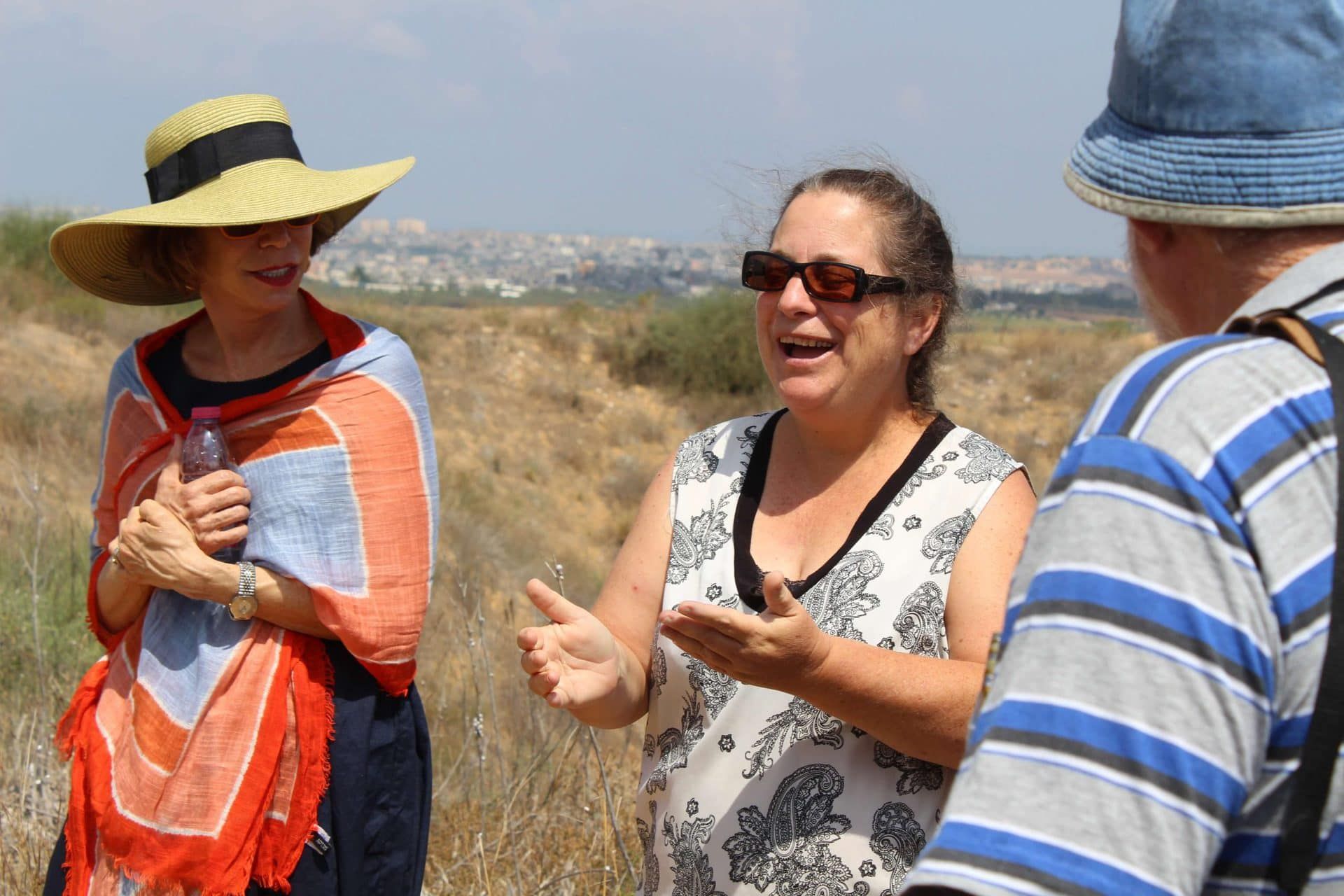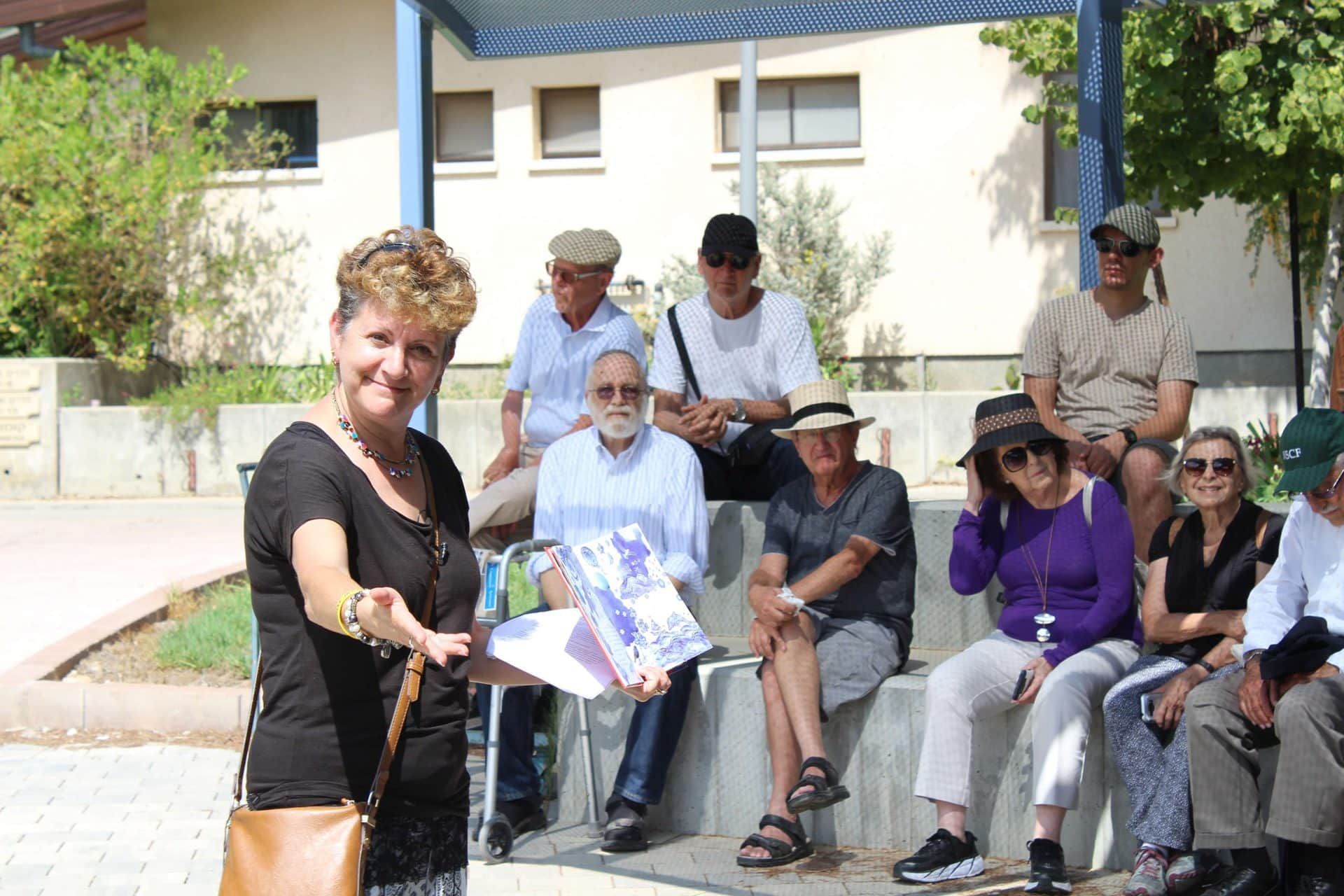Since last night, terror groups fired nearly 200 rockets and mortar shells at southern Israeli communities. The IDF responded against Hamas military infrastructure.

Just the day before, we brought a group of 30 HonestReporting supporters to Israeli communities near the Gaza border, to see the situation in person. We were followed by a crew from i24 News and a segment will be coming out shortly on that channel.
Join the fight for Israel’s fair coverage in the news
Why is this important?
The residents we visited in Kibbutz Nahal Oz, Kibbutz Alumim and Asaf Siboni live under real threat. Yet they also live in a beautiful natural area, with homes and communities to which they are genuinely dedicated. And you may be surprised at the empathy and complexity with which they view their neighbours in Gaza.

It’s hard to appreciate the depth of this reality until you meet the people and see their lives, in person. So that’s exactly what we did.
The farmer
Danny Rachamim is a farmer at Kibbutz Nahal Oz. His friendly, upbeat demeanor belies the pressures of his life just a few hundred meters from the Gaza border: a distance shorter than a typical city block. He remembers a time, decades ago, when he’d visit Gaza to shop, eat and socialize with Palestinian friends. Several Palestinian families from Gaza attended his wedding. But these days Gaza and Israel are separated by security measures and such visits are impossible.

Danny laments that most of the younger Gazans have never seen an Israeli who wasn’t a soldier in uniform and have never learned about Israelis from any source other than Hamas.
Now, the kibbutz’s wheat fields suffer frequent damage from rockets as well as incendiary kites and balloons. His grandchildren have learned from pre-school how to run to bomb shelters. Kibbutz parents contend with a constant threat to their childrens’ psyche: early childhood trauma. One study found that 40 percent of the children growing up in Sderot suffer anxiety and post-traumatic stress disorder. This is, of course, in addition to the constant threat to their children’s lives.
Parents and teachers seek creative ways to decrease the emotional burden on children, for example painting bomb shelters in bright, welcoming colors, and by managing to turn a survival necessity into a collaborative art project.

The entrepreneur
Noga Gulst radiates that special, positive energy that is unique to entrepreneurs. She lives in Kibbutz Mefalsim and serves as the head of business entrepreneurship in Shaar Hanegev region.
Noga fondly remembers fondly vising Gaza as a child with her family every weekend. But now she understands a new and disturbing reality: that Palestinians want Jews to leave. To be clear, Kibbutz Mefalsim and the other communities we visited are inside Israel’s pre-1967 borders. They don’t lie within “occupied territory.”

Noga has the resources to leave, to live anywhere in Israel or even to go abroad. But she says Mefalsim is dear to her. Here is where she spent her whole life. Here is her home. She explains that if this is a war, then “winning” means staying. Yet she hopes for a brighter tomorrow, because to Noga, “winning” also means peace.
The children’s author
With just a few words, Esther Blau Marcus had us all feeling as if we were in a kindergarten at story time. Her patient and comforting voice became the center of our universe. She is the author of a well-known Israeli children’s book, “Tzeva Adom.” Tzeva Adom literally means “Color Red” but colloquially means “Red Alert.” When the army detects a rocket launch, the words “tzeva adom” are announced on loudspeakers in the endangered area. Esther’s book teaches children how to respond to these critical words safely and without panic.
This is no simple task. After a siren, children typically have no more than 15 seconds to enter a bomb shelter. The secret of the book’s success is that Esther understands that children react to the world in a special, magical way.

She explained her book by sharing a surprising fact: In southern Israel, the all too familiar rocket alert “siren” is actually a recorded human voice repeating the words “tzeva adom” via loudspeaker. The warning siren used to be called “Shahar Adom,” which literally means “Red Dawn,” but there are Israeli children named Shahar, who found this scary and hurtful. The Israeli government sensitively changed the siren. Esther later discovered that some children had even become afraid of the color red because it came to represent danger. This is why Esther’s book teaches that every color has a personality and a special job to do: the color red was specially chosen to protect families and children.
Esther told us of a boy who refused to enter a bomb shelter immediately, because he felt the need to first “take care” of his friend, by getting him to safety. The boy was then struck by a terrifying understanding, “Once I take care of my friend, who will take care of me?”
Just as Tzeva Adom guides children to physical safety, Esther’s book enters the “thought world” of children, and guides them to emotional safety.
What does it all mean?
We rarely see the Israeli, human reality in news coverage, though there are exceptions, such as when the Washington Post visited Nahal Oz and the nearby kibbutzim of Nirim and Nir Am. Yet in general, life on the Gaza side of the border gets more coverage, leading to a public perception that Israel’s security measures are somehow excessive.
Only by reminding ourselves of who and what Israel is defending, does the truth come into proper focus.
To learn more about our missions and field trips, click here.

Feature image: IDF


